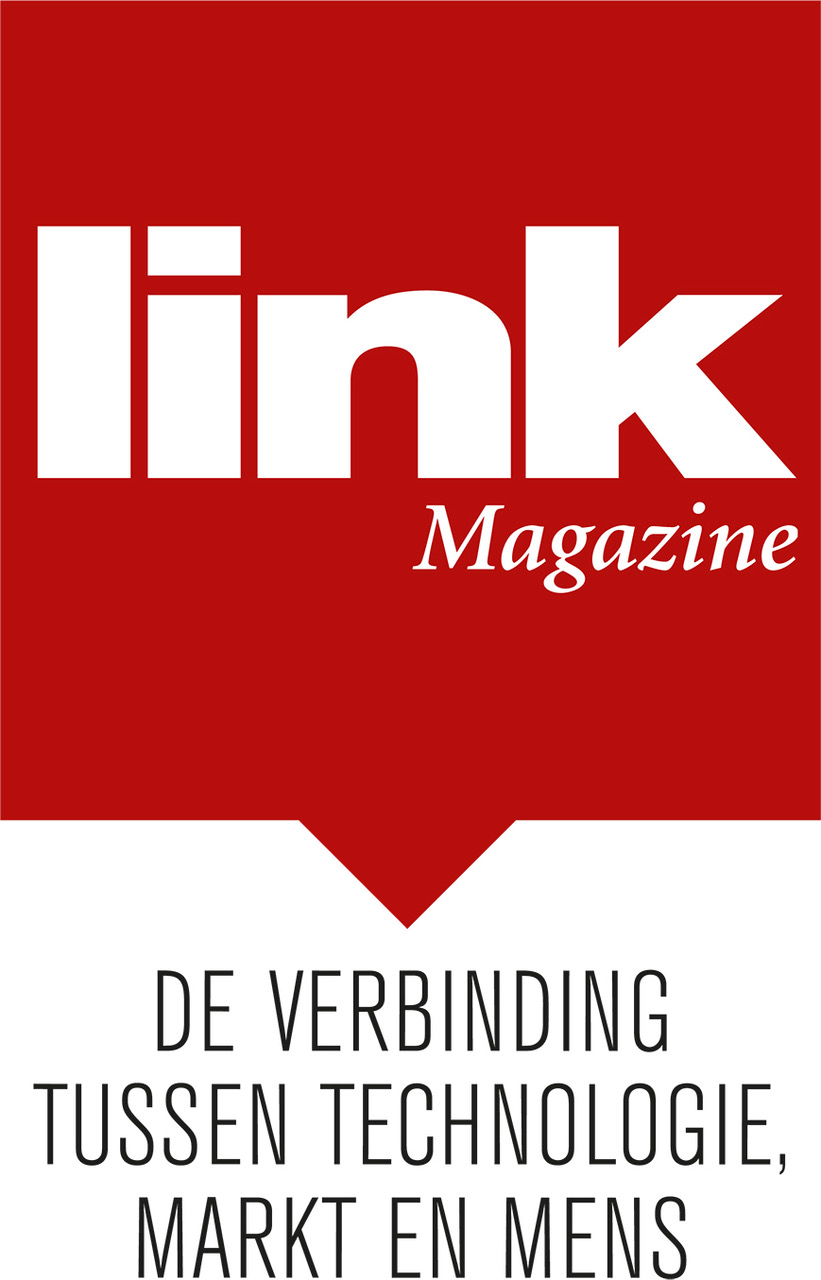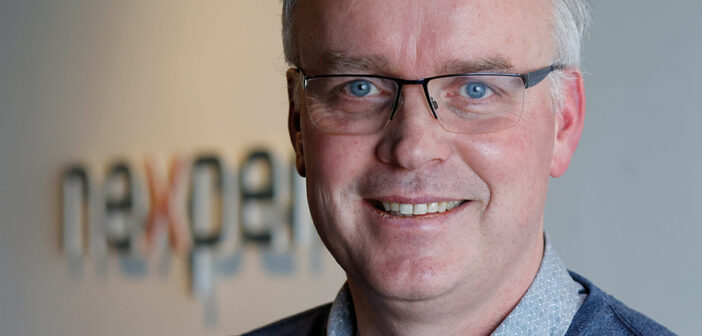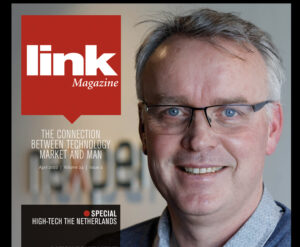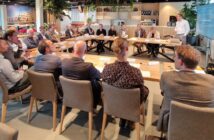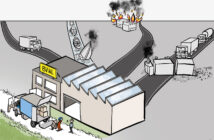Effective coordination of technology and markets would allow the Dutch high-tech industry to achieve more. As far as semicon man Joep Stokkermans is concerned, there is room for the chain to respond more effectively to market trends in the semiconductor industry. For chip manufacturer Nexperia in particular, completing the ecosystem is necessary for innovating, developing and applying semiconductor back-end-technology and equipment – because there is a great deal of money to be made from that technology and in order to improve the balance of power with Asia and the US. ‘In order to keep pace, we need to stay at the forefront of all the knowledge-intensive process steps. Otherwise sooner or later we will fall behind.’
Nexperia manager Stokkermans calls for greater ‘alignment’ of Dutch semicon ecosystem
The main way in which the industry innovates is by fostering use-inspired basic research: useable technology for which a fundamental research question still to be answered, explains innovation manager Joep Stokkermans. ‘This type of research question needs to be answered in the next five years in order to meet the rapidly growing global demand for high capacity power chips. At Nexperia we are throwing our weight behind that effort, but we can’t do it alone.’
He sees opportunities driven by the energy transition and the European Chip Act. This means that Nexperia, which ships more than 100 billion products annually (10% of the global total of semiconductor products), needs to fix its gaze outwards. ‘We are looking for new semiconductor materials and ultrafast assembly and testing equipment that will significantly contribute to the transition to electric vehicles and energy efficient infrastructure for data centres. Market demand within a time horizon of 5 to 7 years is concrete and verifiable. Where demand aligns with Dutch core competencies, Dutch industry needs to be ready to respond. A semiconductor product needs a front-end process and a back-end process. For our type of chips, the opportunity for the Netherlands lies in new back-and process technology and equipment. This will allow us to offer a unique value chain within Europe. There is a great opportunity for industry, research organisations and universities to define our priorities together.’
More focused choices
Joep Stokkermans asserts that ‘in today’s information age, it is more possible than ever to establish an approach to industrial markets and a good industrial strategy for the Netherlands that enjoys broad support’. ‘Based on the figures about emerging end markets, the chain can reach agreement on the core competencies that will have the greatest economic impact, resulting in much more focused choices. That would mean different choices for the semiconductor industry’, says Stokkermans, who is also innovation director of Nexperia subsidiary ITEC, to which it has entrusted its back-end technology activities.
Nexperia and ITEC want to focus on a limited number of niches underlying which, he believes, are fast-growing markets worth billions: microLEDs for the display market, power chips for automotive and RFID chips for retail and logistics. ‘Outside the Netherlands, significant resources are being put into these markets. We see competitors and foreign governments investing tens of millions in takeovers and acquisitions in order to be able to compete. The needs of those markets align perfectly with ITEC’s core competency: developing and building equipment for the high-volume, low-cost placement of ultra small chips.’
Close to the end product
‘But in order to capture those markets ahead of the worldwide competition, Dutch high-tech needs to differentiate itself – on the one hand through innovative technology, on the other through a good ‘alignment’ with business partners who can turn the three types of chips into cost-efficient end products. What is needed is a strategic fit between these firms, who by working together can achieve a much stronger competitive position than each one could individually. The closer this chain is to an end product, the greater the economic impact. Ideally, that consumer product or service will be supplied by a Dutch or European company, for example a car manufacturer or parcel service.’ According to Stokkermans, this is the scenario that would allow for optimisation of earnings. ‘For example, we are developing technology with the Dutch research institutes Delft University of Technology, TNO (the Netherlands Organisation for Applied Scientific Research) and CITC (Chip Integration Technology Center) which we integrate into our equipment. This enables customers to make unique products using our equipment and processes, in the most economical and energy-efficient way’, he claims.
‘It requires a different approach and mindset throughout the value chain than we are used
ITEC may have been spun off into a separate limited company in the middle of last year, but it remains part of Nexperia. ‘Within Nexperia, we are vertically integrated: the ITEC roadmap is closely aligned with Nexperia’s. So working in a single value chain comes very naturally to us.’
Packaging
Nexperia supplies its chips primarily to the automotive industry, complementing the far more complex ICs produced by NXP, which is located right next to the Novio Tech Campus building in Nijmegen that houses Nexperia and ITEC. The products made by Nexperia and NXP end up in the same mobile phones and modules for electric/conventional cars, notes Stokkermans.
‘It requires a different approach and mindset throughout the value chain than we are used
Before they can be placed on a PCB, chips and ICs need to be provided with technology to connect them to their electronic environment. This packaging is part of the back-end process referred to above. So for example, electric vehicles need semiconductors made from different materials which are better able to withstand high temperatures. ‘That calls for investment. Since 70% of the cost of most Nexperia products comes from the back-end and that is where we differentiate ourselves, it is also important to stimulate R&D in this area in order to remain competitive in the global market.’ The same applies to manufacturing technology and infrastructure supplied by ITEC, says Stokkermans.
With partners and subsidies
These days, ITEC also supplies to third parties, but until it was given a more autonomous position vis-à-vis Nexperia, ITEC devised and built its assembly, testing and inspection machines exclusively for a place on the production lines in Nexperia’s three back-end factories in Asia. Nexperia’s front-end factories are in Europe. From there, the wafers with the chips on them are flown to China and Malaysia. There is a historic reason for that division. At one time, the back-end processes were labour-intensive, so they were transferred to the low-wage countries. These days, the degree of automation is also high in the back-end, but the Asian countries have since become very proficient in this area and are loath to give up those activities and the money to be made from them. ‘So we need to come up with a better technology that can package more quickly in order to reduce the cost price of the chip. The semiconductor world has become far more complex and moves more quickly. Every innovation in products also comes with opportunities to innovate processes. We want to continue to lead the way in this area and we can only do so with the right partners and with appropriate government subsidies.’
Increasing scale
Precisely in order to take that step forward in innovation, ITEC has been made a separate business entity within Nexperia. Until now, it would build between twenty and thirty units of the various types of assembly and testing equipment per year. ‘As a separate business, ITEC can now start also serving Nexperia’s subcontractors, companies like ASE and UTL. But in this form, ITEC can also act in markets adjacent to Nexperia, such as those for RFID and LED displays. A benchmark study has revealed that ITEC’s systems are more reliable and faster and therefore have a cost of ownership which is 20 to 50% lower than those of the competition. From this, the Nexperia management concluded that there is a market for ITEC as a separate entity in which it can sell five times as many systems. That increased scale will generate the development finance needed to further innovate the complex packaging technology and make it even more competitive.’
Complete ecosystem
But in Stokkermans’ view, something else is also needed, which he describes with the word ‘alignment’. ‘It would be great if we could put together a complete semiconductor chain in the Netherlands that could supply the manufacturers of microLED displays, battery management systems and RFID tags with completely packaged power and mixed-signal chips. An ecosystem containing all the parties that would require. So you would get a good interaction between the knowledge developers at the universities and other research institutes such as TNO, CITC, the chip developers and manufacturers like Nexperia, plus the firms like ITEC that build the equipment. That interaction between practice in the factory and science is indispensable in order to achieve better products and better processes to manufacture them. Many of our eastern neighbours never stepped away from that model and it is now serving them well.’
Autonomous factories
Such improved processes would take place in ‘Industry 4.0 factories’, all autonomously monitored and adjusted as necessary and capable of producing 10,000 wafers per day, each containing half a million chips. The processes would need to be very differently configured in terms of the back-end in order to increase the quality of the chips and reduce the cost price. ‘Because unlike in semiconductors for high-end ICs for smartphones and the like, 70% of the cost price of monofunctional chips is in the back-end. Fully digitised, the production of these three semicon niches – microLEDs, power and mixed-signal chips – in the Netherlands and Europe would be able to compete effectively with Asia and the US’, believes Stokkermans.
Desktop model
In the production facility on the ground floor of the Novio Tech Campus, bulky chip assembly machines are constructed. These ITEC machines can be used to assemble microLEDs for displays, for example. ‘But in a large display factory you couldn’t manufacture more than ten screens per day (each containing 24 million microLEDs! – ed.) with them. The whole world of back-end semiconductors is working hard to make this process 20 to 40 times more efficient. This machine’, gestures Stokkermans, ‘needs to be – disruptively – innovated further to create a small desktop model containing barely any mechanics. The only thing moving inside it would be the chip. You could then replace this one machine with twenty faster desktop models and you would achieve that required level of efficiency, at the right price. At which point, you could resume display production here in the Netherlands or elsewhere in Europe. The required skills and knowledge are available in our ecosystem. But it requires initial investment and a different approach and mindset throughout the value chain than we are used to. Because in the Netherlands, every company is focused on its own market.’
Pilot factory
The back-end technology for the production of smart (clothing) tags and power chips also needs to be completely reconfigured if the ‘market worth billions’ that Stokkermans envisages is to be captured. ‘But that will require a more tightly knit, aligned Dutch ecosystem bringing together all the packaging know-how, academic and applied. Which is why we set up the CITC in Nijmegen. Ideally, this will first result in a pilot factory in which innovative packaging technology can be thoroughly tested. After the pilot, the global players – companies like Nexperia – can design their production facilities and choose locations.’
Chip Act subsidies
Stokkermans attests that building up an ecosystem across company boundaries is not possible without government support. Under the European Chip Act proposal, the EU has reserved €43 billion for the semiconductor industry, in order to make Europe far less dependent than is currently the case on the US and Asia for (geopolitically) crucial semiconductors. Not so much in order to start producing advanced ICs but so as to have something to barter with in order to restore the balance of power. The Dutch government has itself made available €218 million for IPCIE (Important Project of Common European Interest), and that sum may increase. There is also the National Growth Fund for the Next Generation High-Tech Equipment NGHT Semiconductors. ‘It is important to use the submitted proposals to set up the most complete possible new semicon chains in the Netherlands and Europe.’ What will the Netherlands focus on? Which chip will be produced by the new EU wafer factory and how will it be packaged in the back-end so that the Dutch economy derives maximum benefit from it? Above all, though, Stokkermans believes, building up that ecosystem calls for a new industrial policy. ‘Real innovation demands a different industrial policy, based on thinking in terms of industrial strategy, as shown by China and the US. In our national consensus culture, that is naturally something we will do together.
